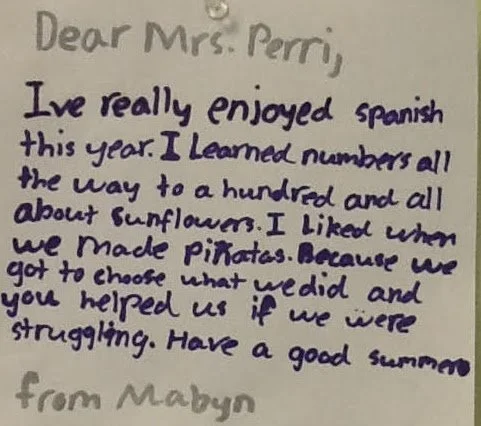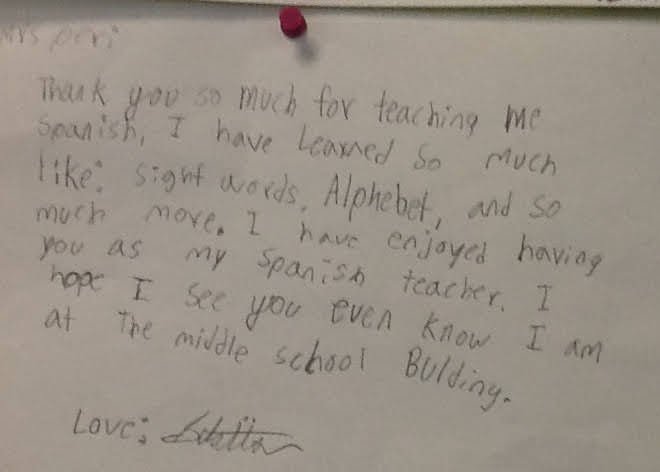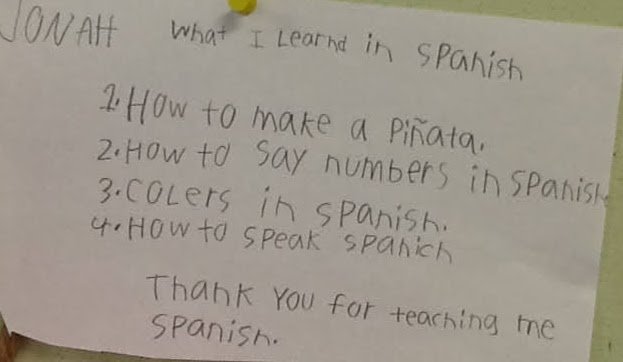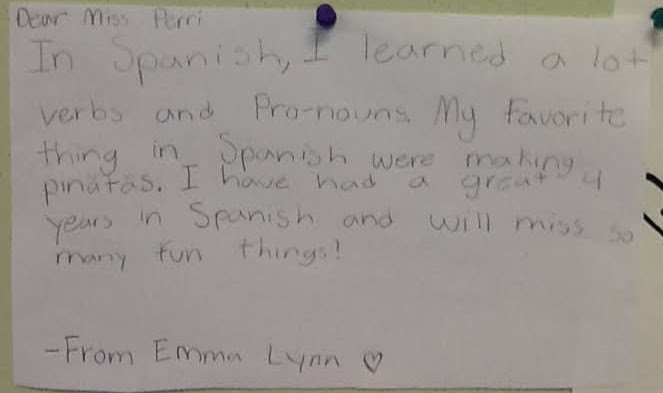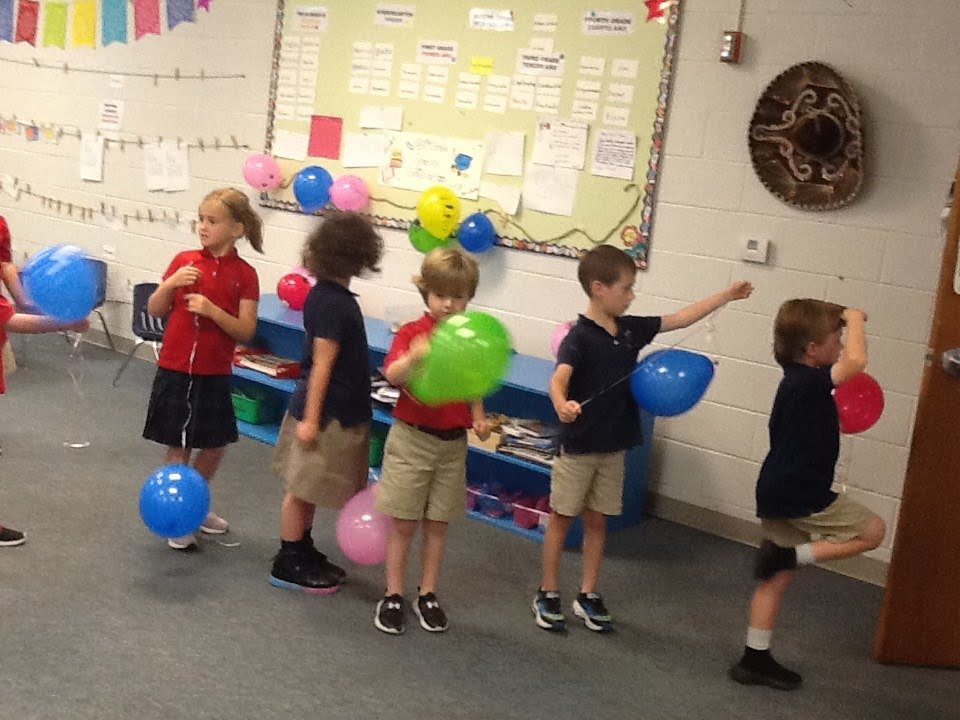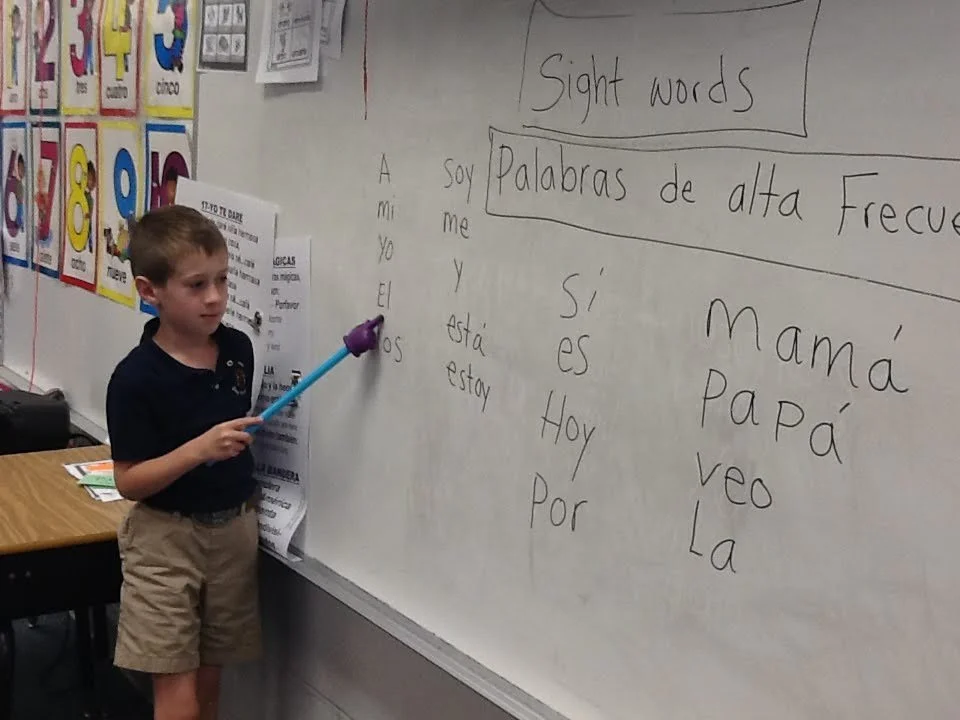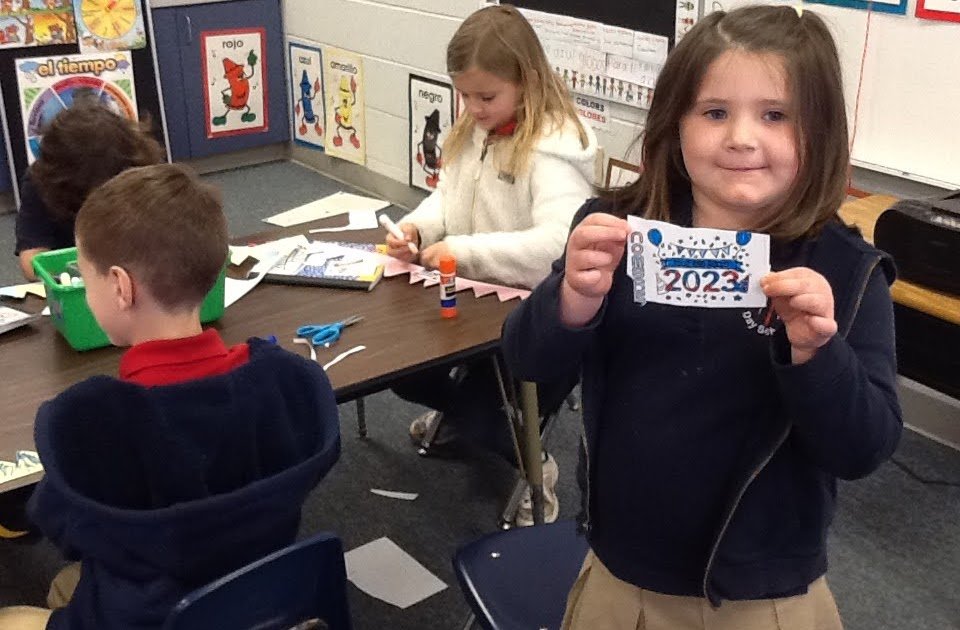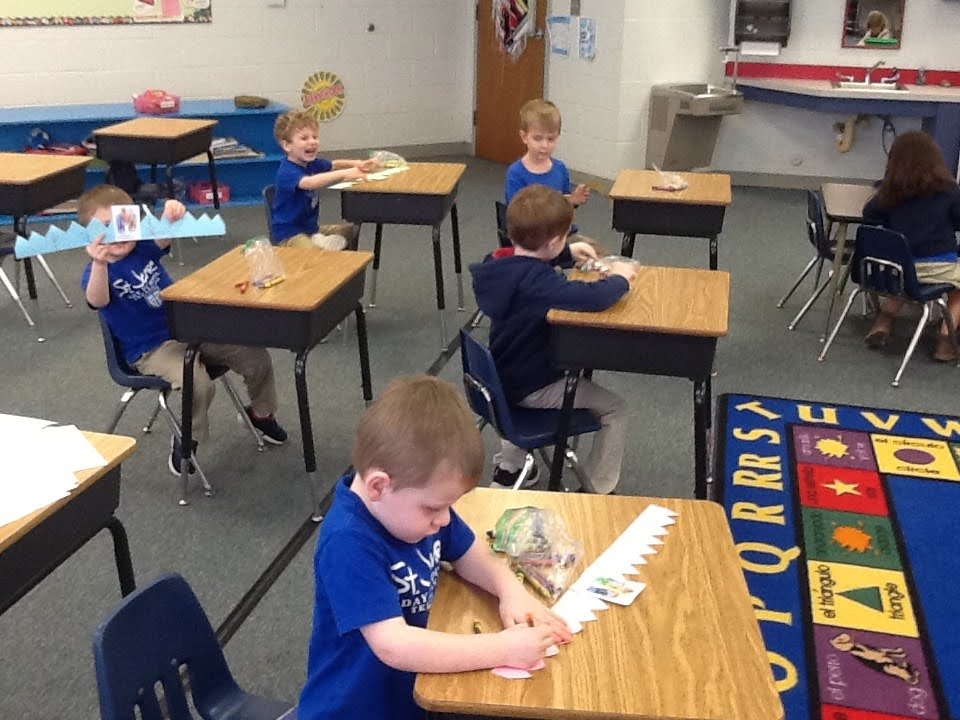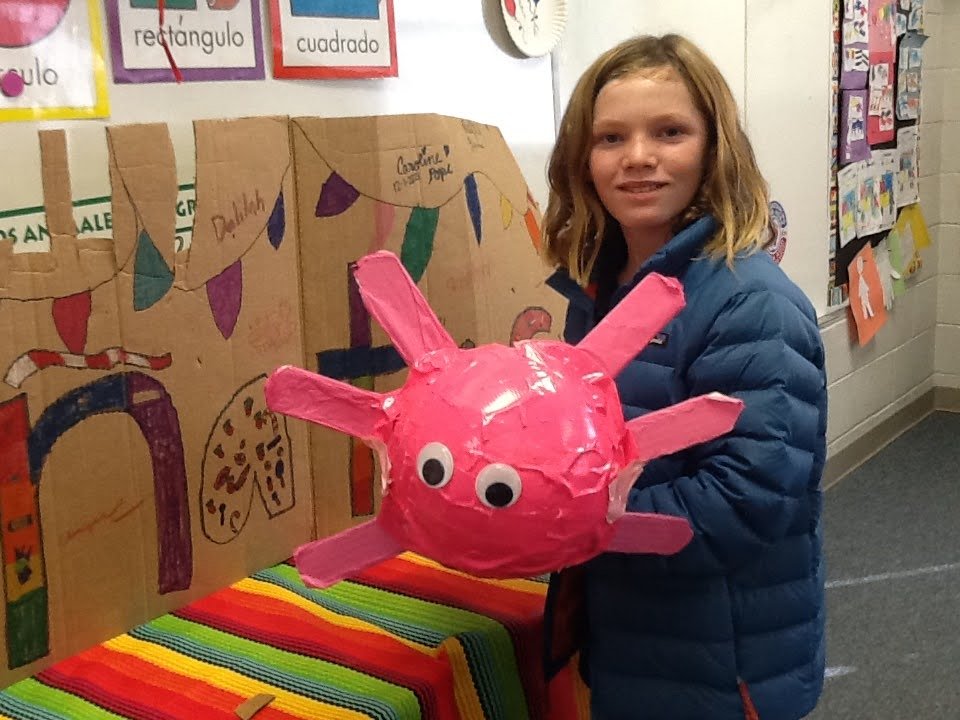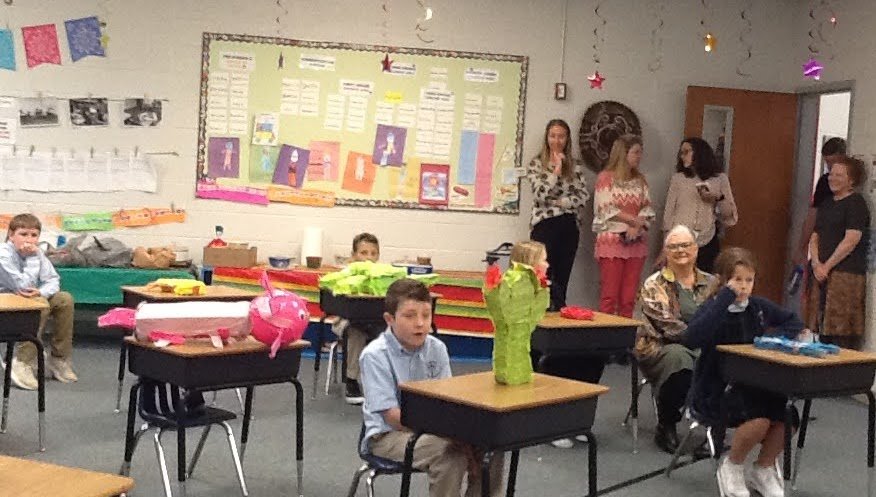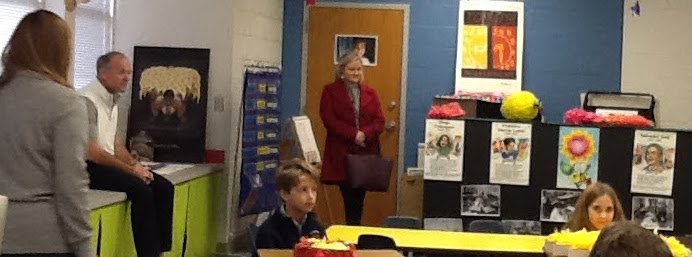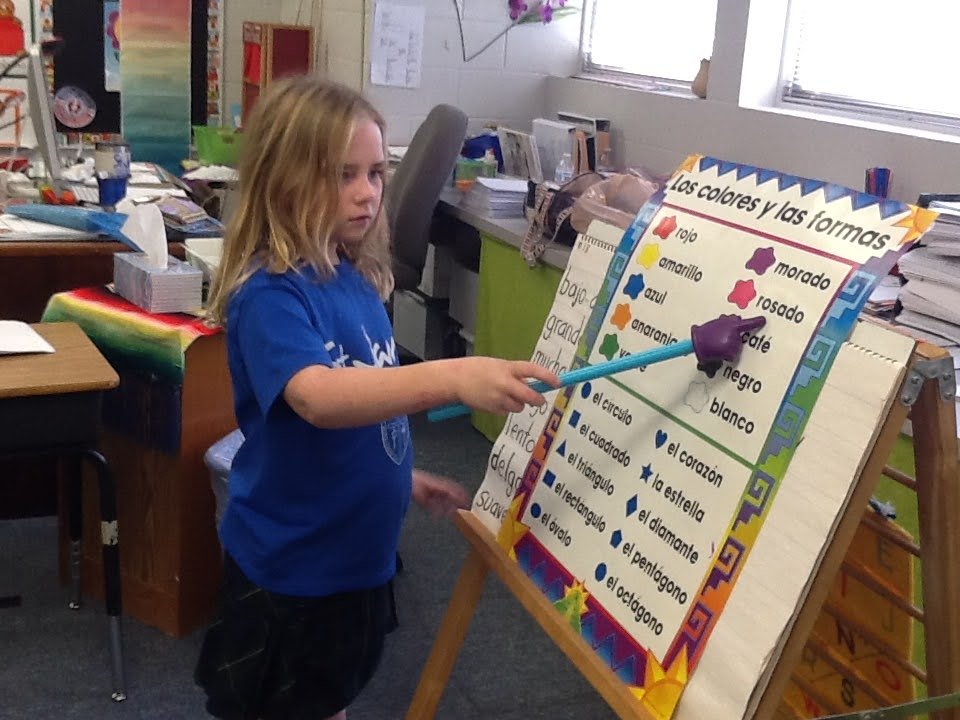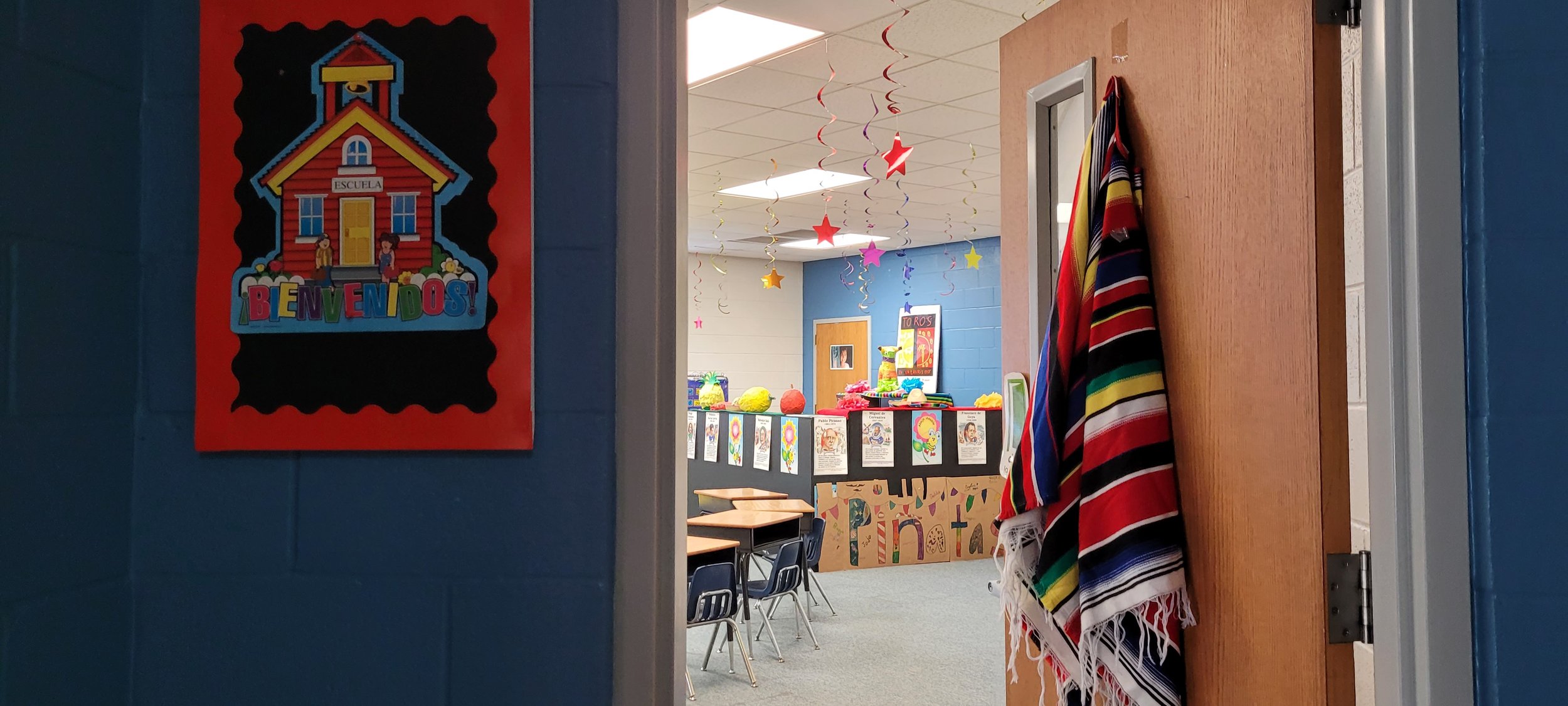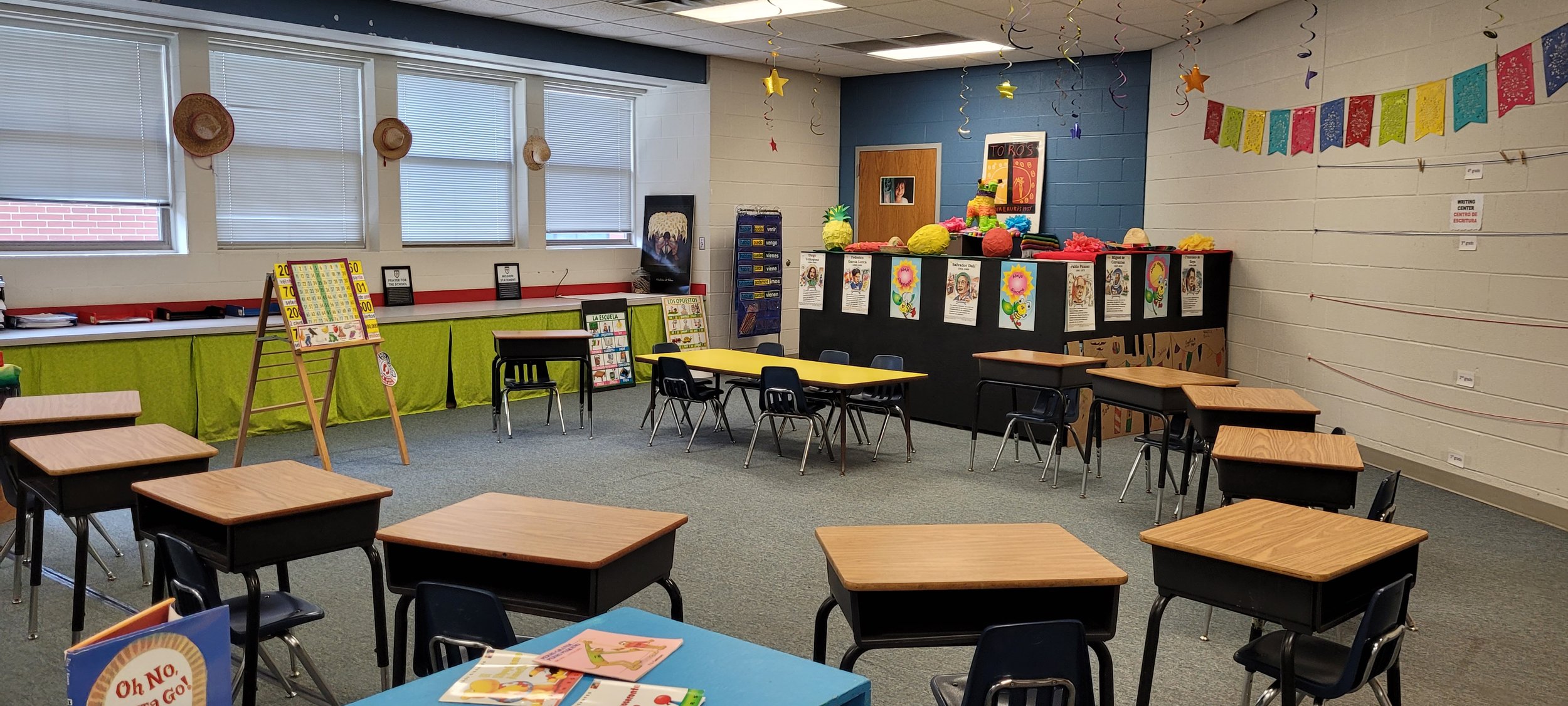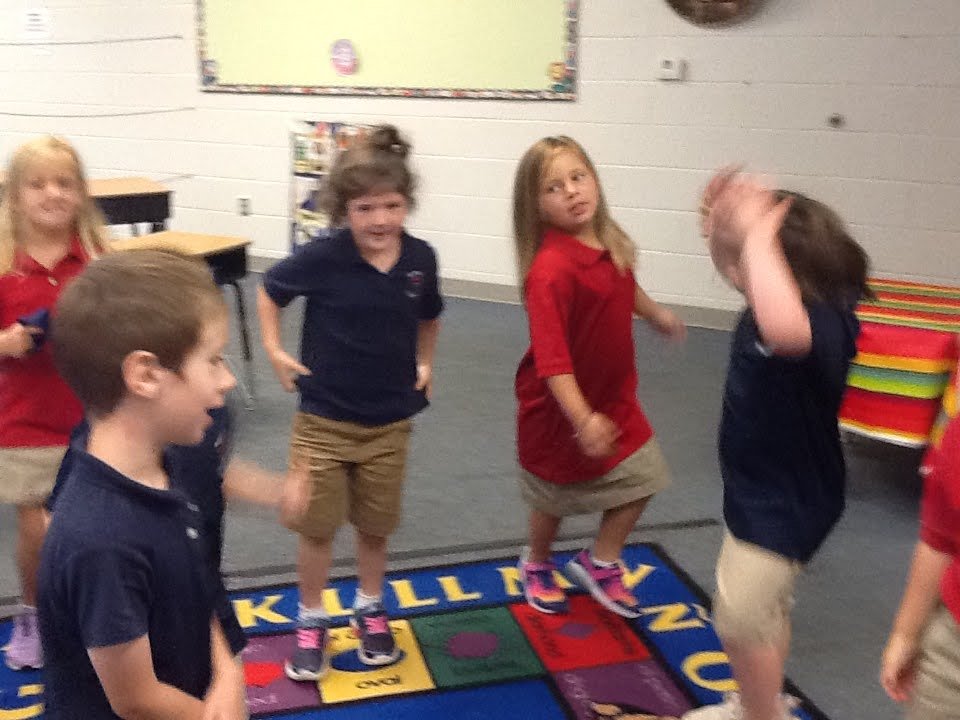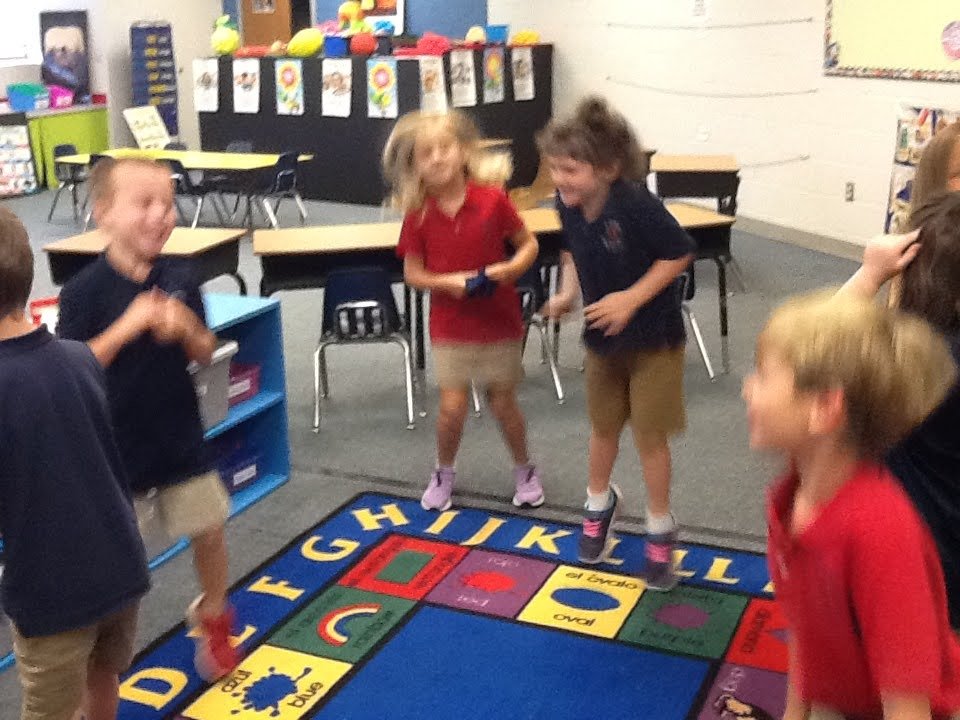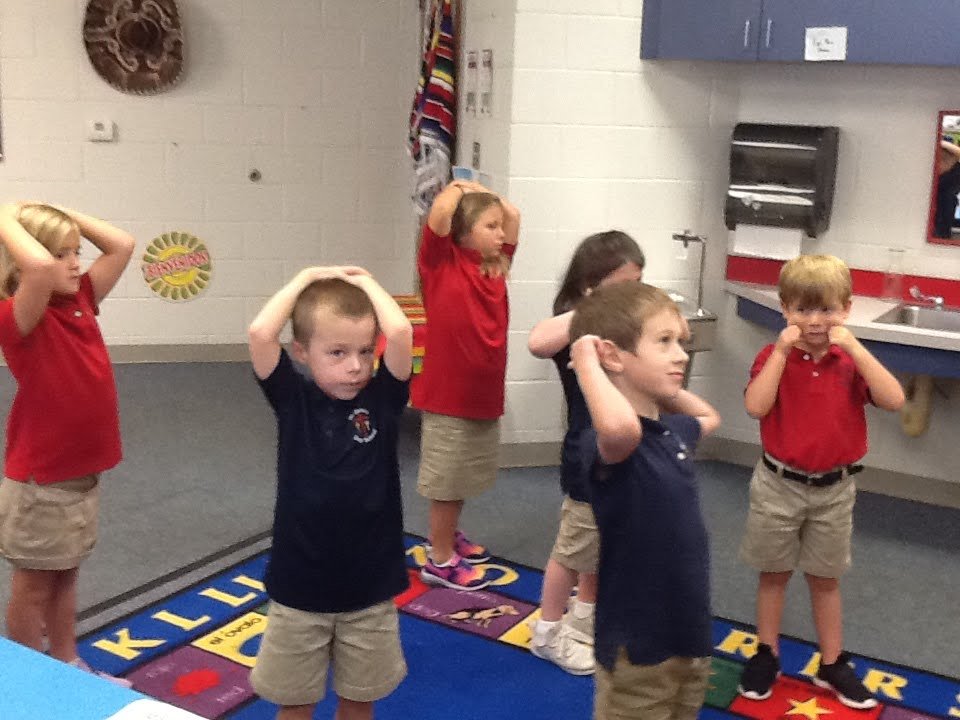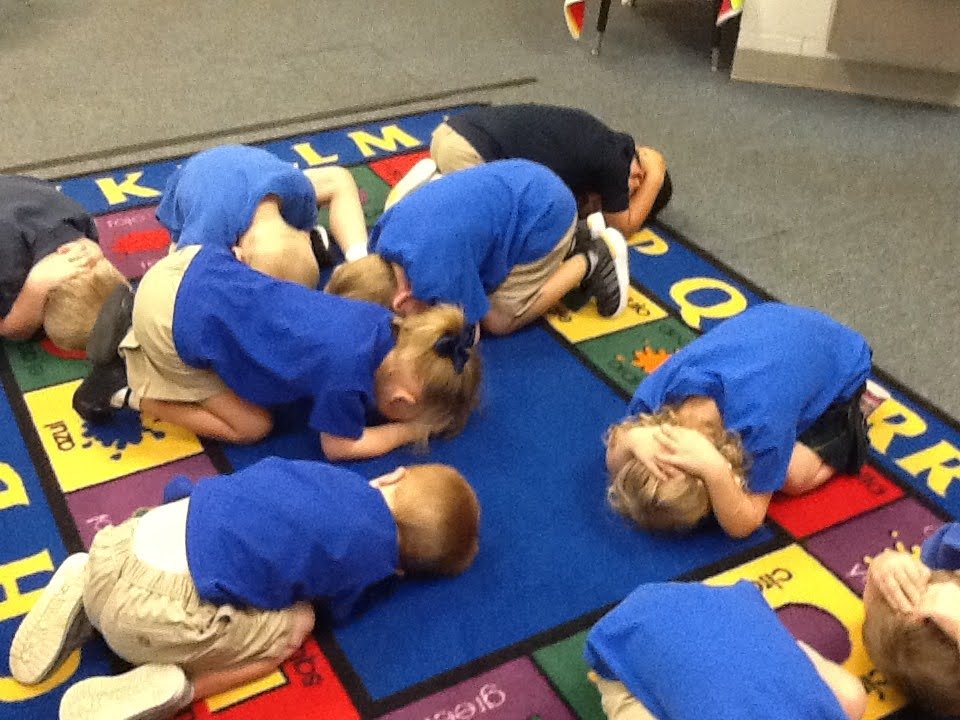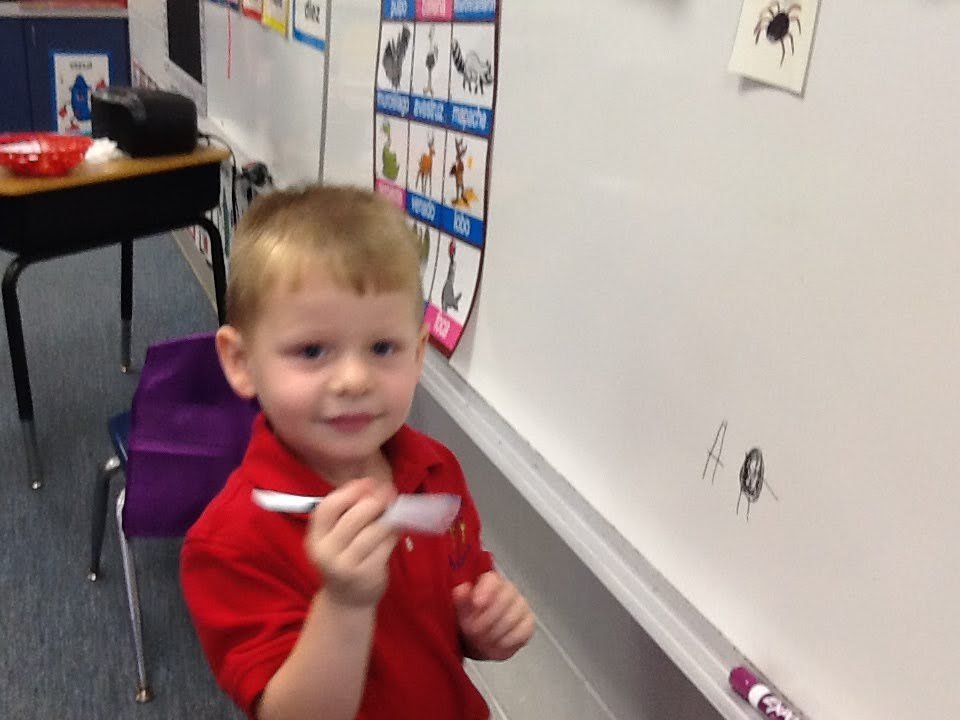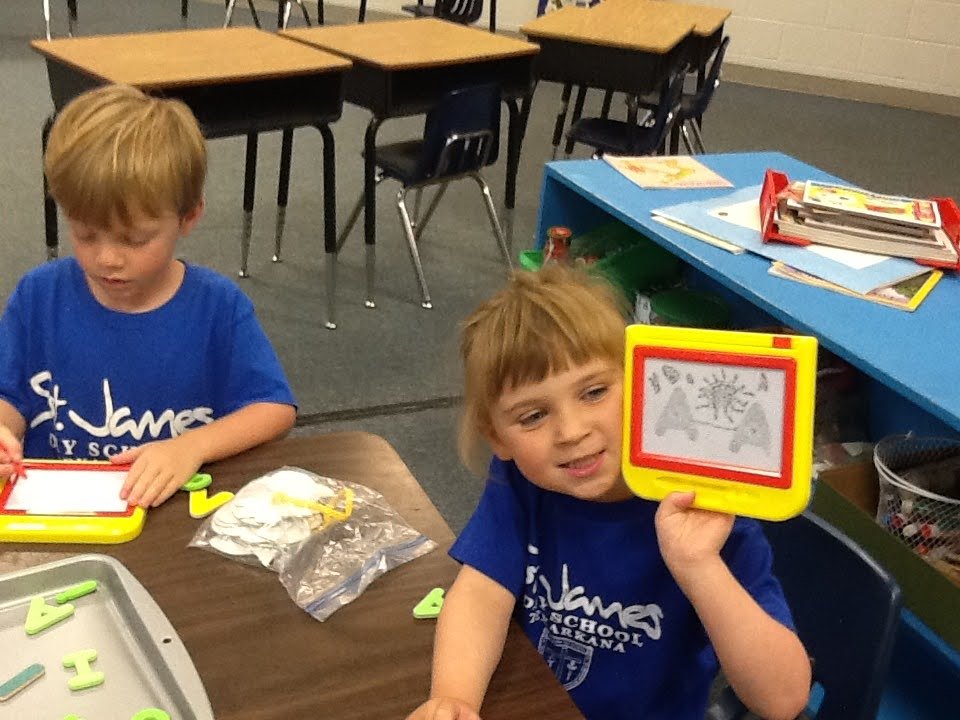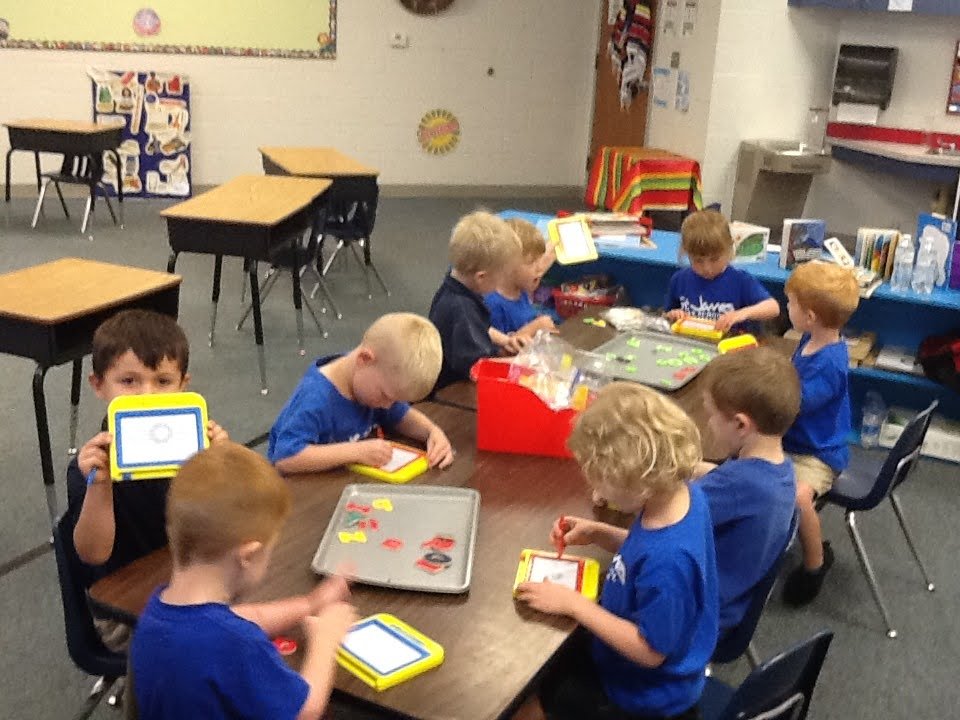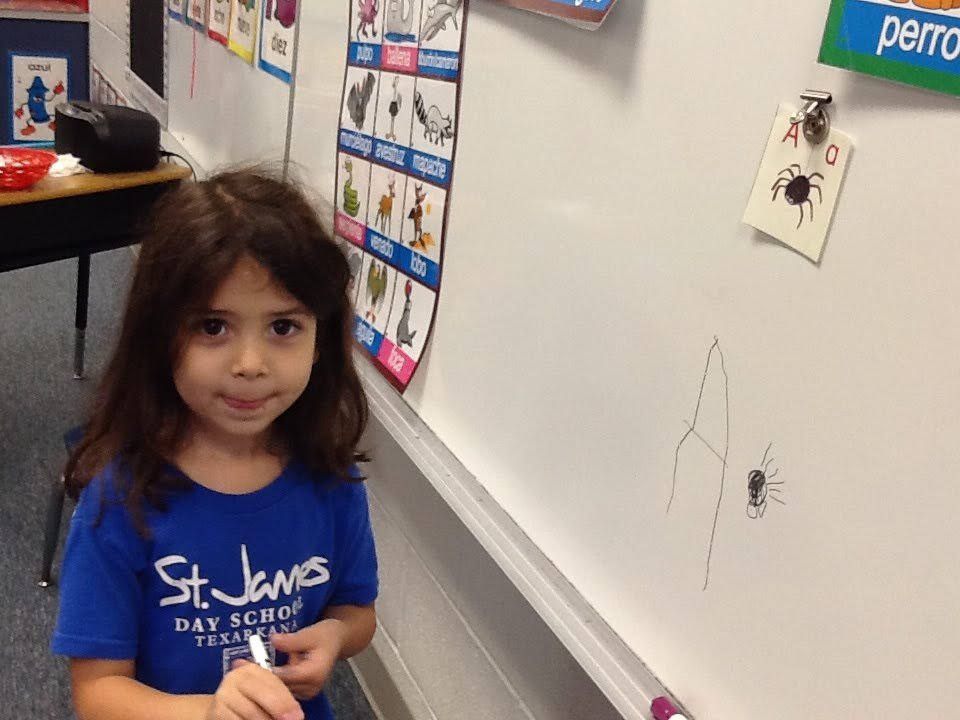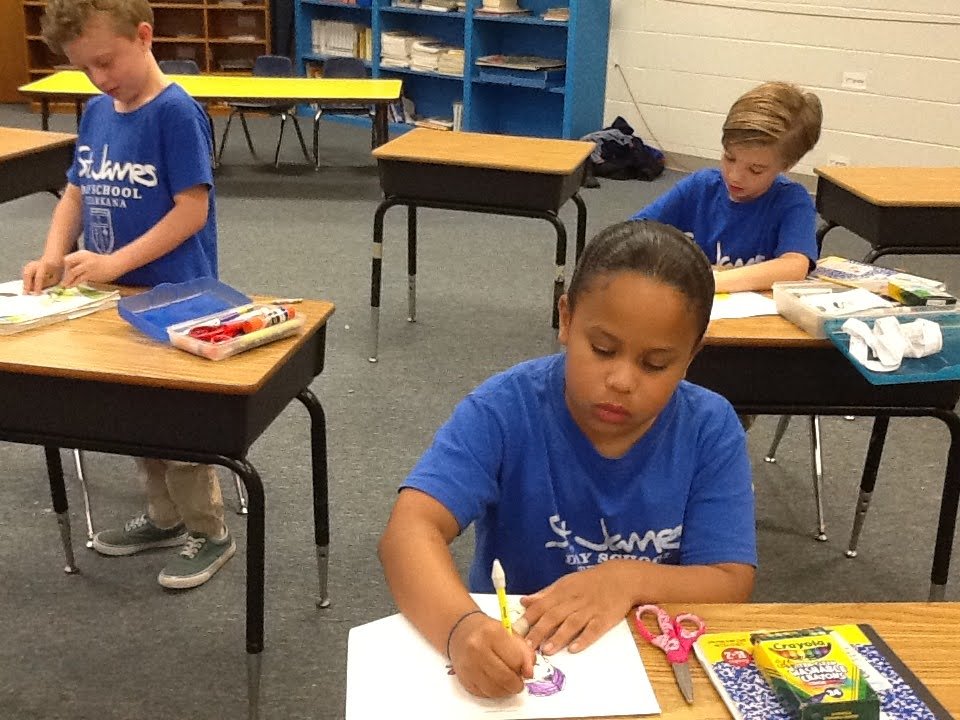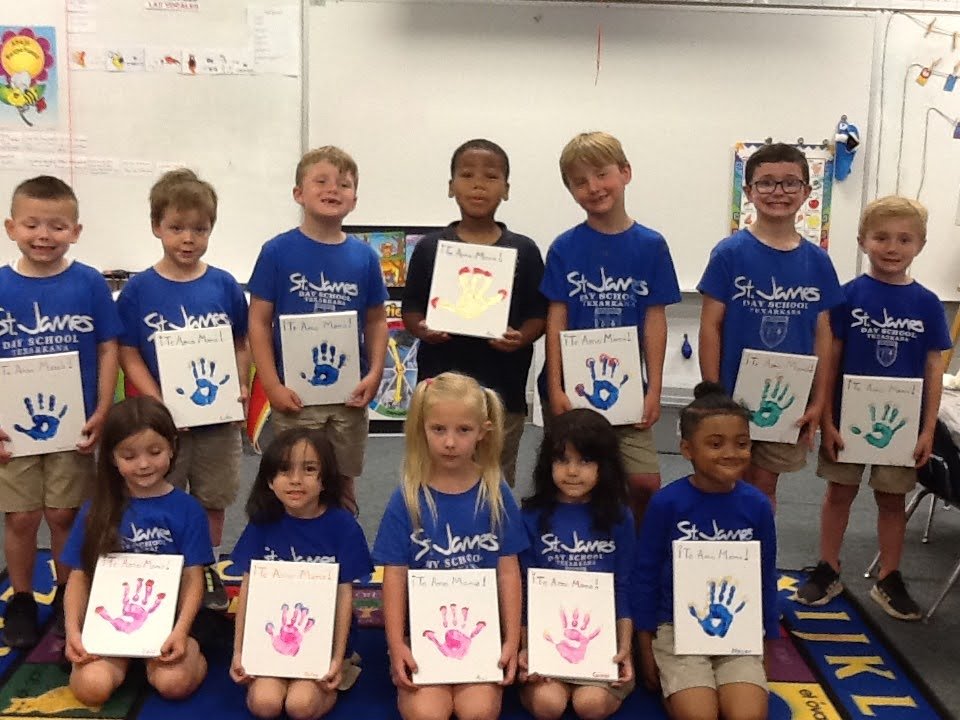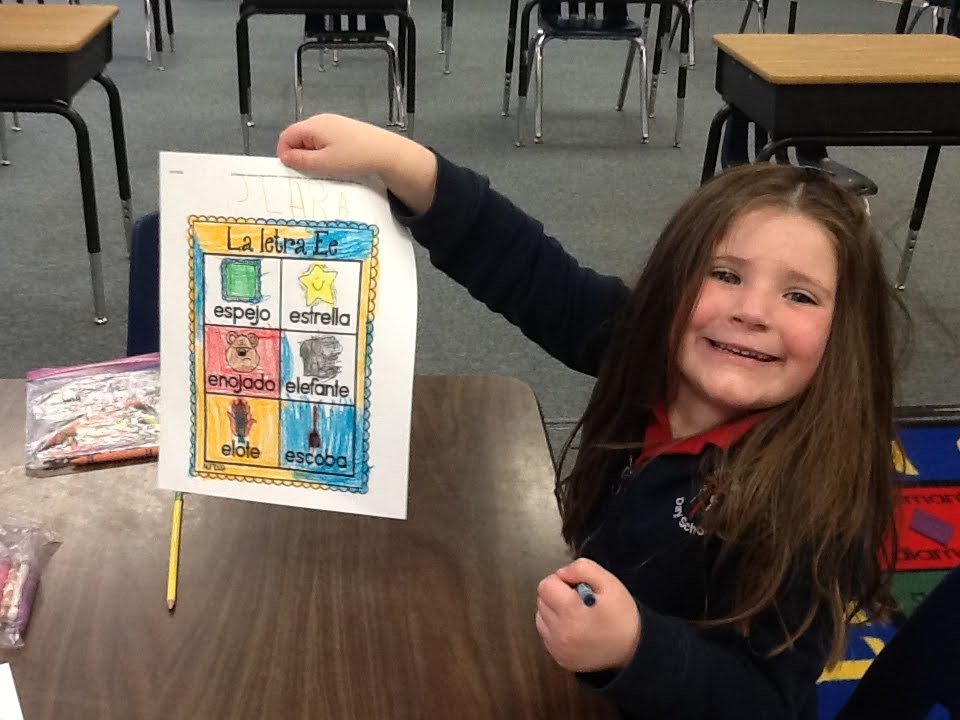The students wanted to pay tribute to their grandparents. They prepared special sight words that meant a lot to them. They also learned some new songs in Spanish for their grandparents.
La canción de los colores
De colores:
De colores se visten los campos en la primavera
De colores:
de colores son los pajaritos que vienen de fuera
De colores:
de colores es el arco iris que vemos lucir
Y por eso los grandes amores de muchos colores me gustan a mi
Y por eso los grandes amores de muchos colores me gustan a mi
Canta el gallo: canta el gallo con el quiri quiri quiri quiri quiri quiri quiri quiri
La gallina: la gallina con el cara cara cara cara cara cara cara
Los pollitos: los pollitos con el pio pio pio pio pio pio pio pio pi
Y por eso los grandes amores de muchos colores me gustan a mi
Y por eso los grandes amores de muchos colores me gustan a mi.
The Song, Colorful
Colorful, colorful the country dresses in the Spring time
Colorful, colorful are the birds that come from far away
Colorful, colorful is the rainbow that we see shining
And that’s why great loves of many colors I like
The rooster sings, the rooster sings with the hen, the hen, the hen with the
The chicks, the chicks with the and that’s why the great loves
SALUDOS-GREETINGS
¡Hola! ¿Cómo estás?
Hello! How are you?
Muy bien, gracias
Very well, thank you
Mucho gusto, bienvenido
Nice to meet you, welcome
Hasta mañana
See you tomorrow
¡Adiós! ¡Adiós!
Goodbye!






